Revisiting Whitbarrow
Article by Chris Butterfield
Author and cartographer Chris Jesty played a pivotal role in the legacy of the Wainwright guides. He maintained a long correspondence with Alfred Wainwright, and on multiple occasions, Jesty proposed revising Wainwright’s Pictorial Guides. Wainwright eventually granted his approval, with the condition that these revisions would only be published posthumously.
In 1992, the Westmorland Gazette stopped publishing the Wainwright books, and the rights were transferred to Michael Joseph. This new publisher was not inclined towards substantial revisions, thus limiting Jesty to making only minor changes.
The situation changed in 2003 when Frances Lincoln took over as the publisher, with John Nicholl as Managing Director. This shift favoured Jesty, who was then encouraged to undertake the guidebook revisions. He dedicated ten years to this task, making careful and necessary guide updates.

Three years ago, while researching the publishing and printing history of Alfred Wainwright’s works, I had the opportunity to meet Chris Jesty, leading to a friendship. It was a surprise to learn that Chris, despite his deep connection to fellwalking through his work, hadn’t engaged in the activity for some time. I suggested we explore some of his favourite fells together, and he readily agreed.
One of the fells we chose was Whitbarrow, featured in Wainwright’s The Outlying Fells of Lakeland. Chris is fond of this hill, and as I had never climbed it, he was enthusiastic about leading me on what he considered one of the best routes to the summit. Wainwright himself had lauded this walk in his book, describing it as ‘…the most beautiful in this book; beautiful it is every step of the way…All is fair to the eye on Whitbarrow.’
Our journey began just after sunrise at a car park near the hamlet of Mill Side. The conditions were ideal for walking, with clear skies and only a faint trace of clouds. Chris brought along both his revised version of the guide and Wainwright’s original, eager to show the changes he had made to the route during our ascent.


We set out early for our walk, beginning at 6 am. Our destination was Whitbarrow, and we headed towards the southern end of Whitbarrow Scar, taking the path that veered to the right. As we ascended to higher ground, we encountered a rather unique sight: a solitary bench, seemingly placed amid nature, facing a dense wall of trees.
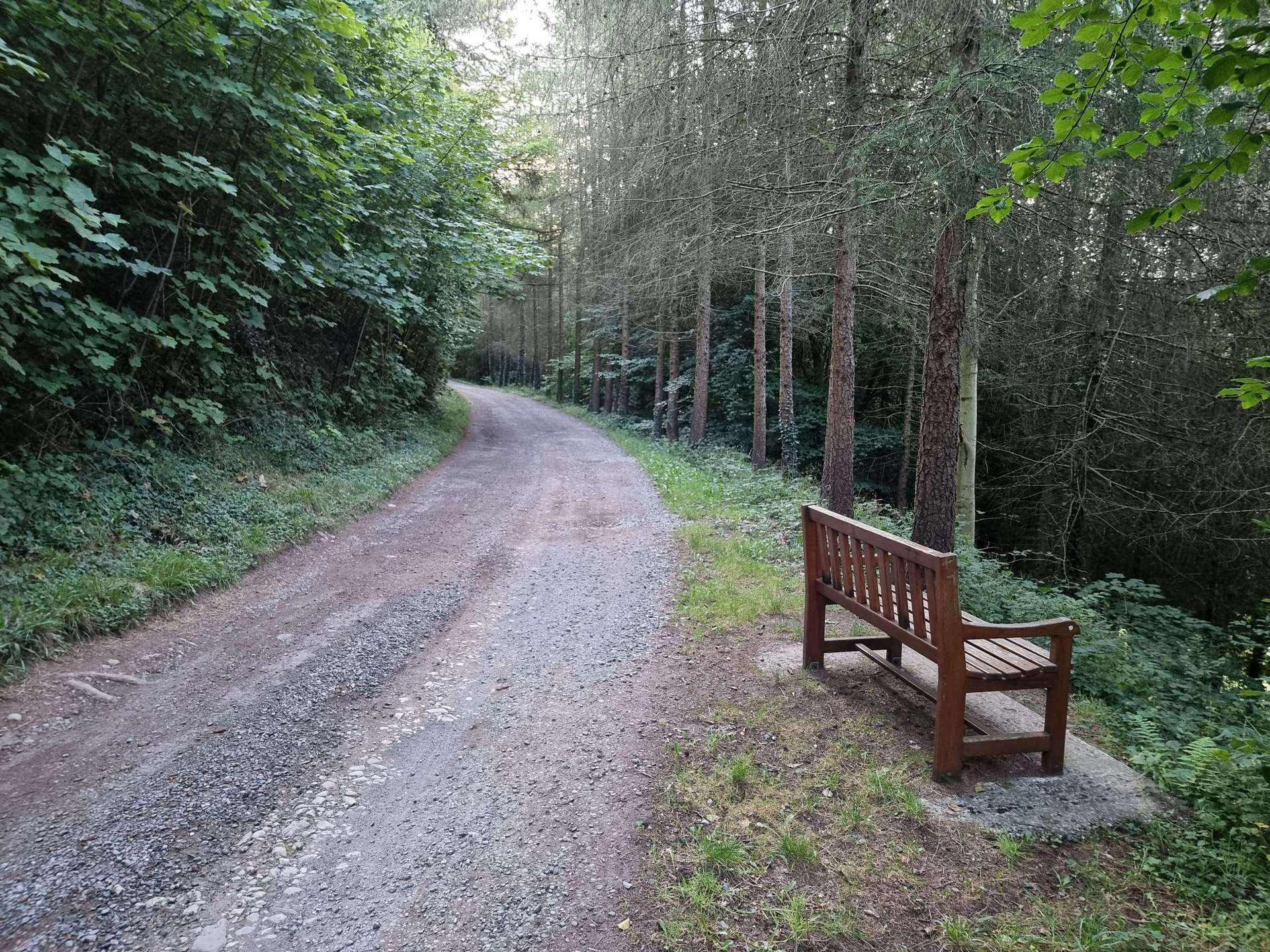
The path took a sharp left turn as we progressed, leading us into a steep climb through the woods. After a while, we arrived at a gate where Chris pointed out a thoughtfully planned detour that he had added to the original guide. This detour involved a brief walk through a cluster of trees, leading us to the southern ridge of the area.
In just a few minutes, we were presented with a breathtaking view. The panorama included the Foulshaw Moss Nature Reserve and, further in the distance, the area of Arnside. As I took in the scenery, I couldn’t help but wonder why this particular detour had not been included in Wainwright’s original guide. Perhaps, at that time, the route was not as accessible or passable as it is now.
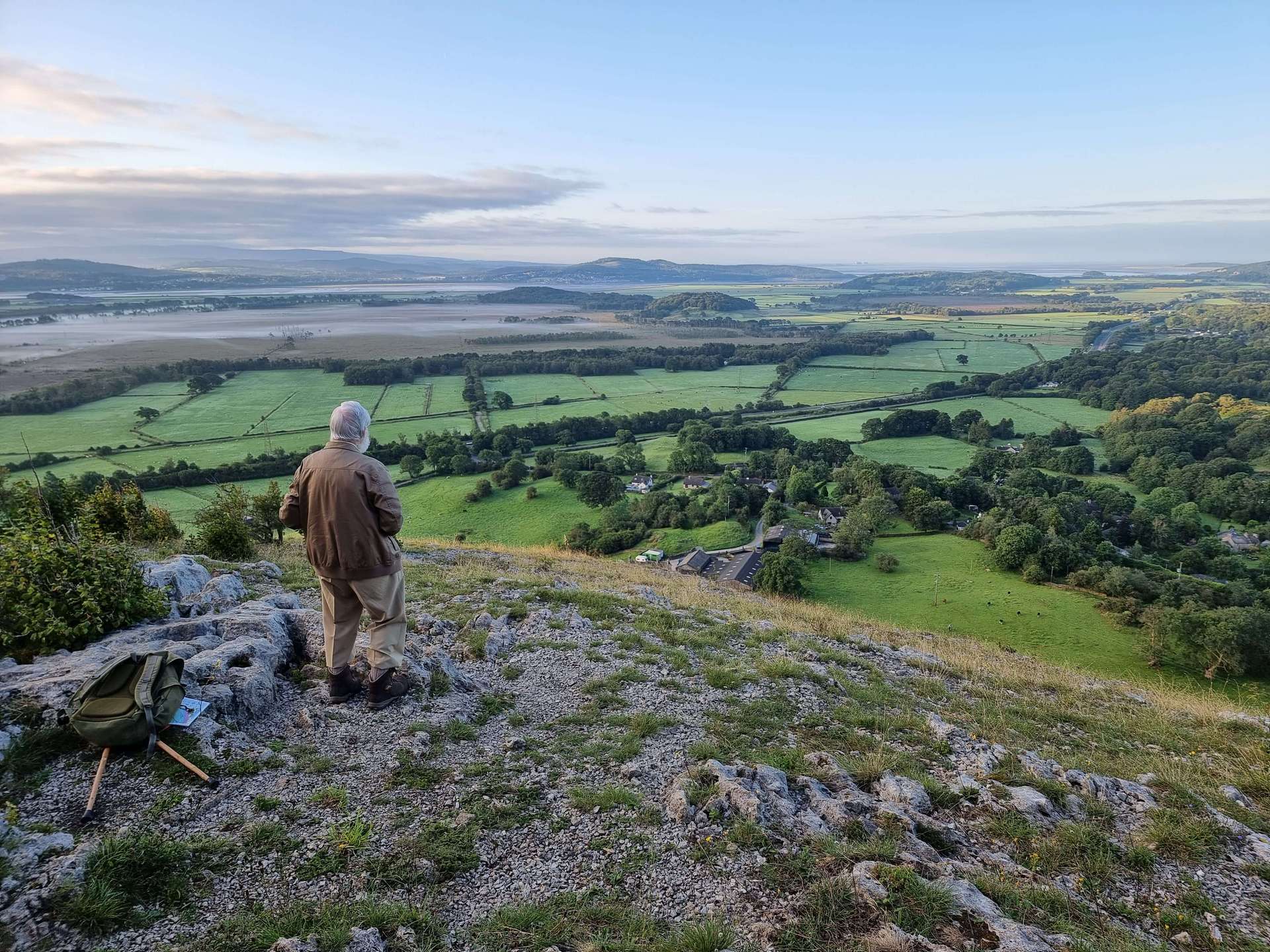

Back on the main trail, we steadily ascended, reaching a point where the forest canopy began to sparse, revealing the expansive limestone terrain of Whitbarrow Scar. The route towards Chapel Head Scar was now unobstructed, offering a clear view of the distant summit cairn atop Lord’s Seat.

Whitbarrow, a designated nature reserve, boasts a rich variety of rare plants and wildlife. It’s also a grazing ground for cattle and sheep throughout the year, even at the summit. As we navigated across the scar, Chris intermittently stopped to point out and name the distant fells and various landmarks. His energy was palpable, and he was enthusiastic about reaching the summit.

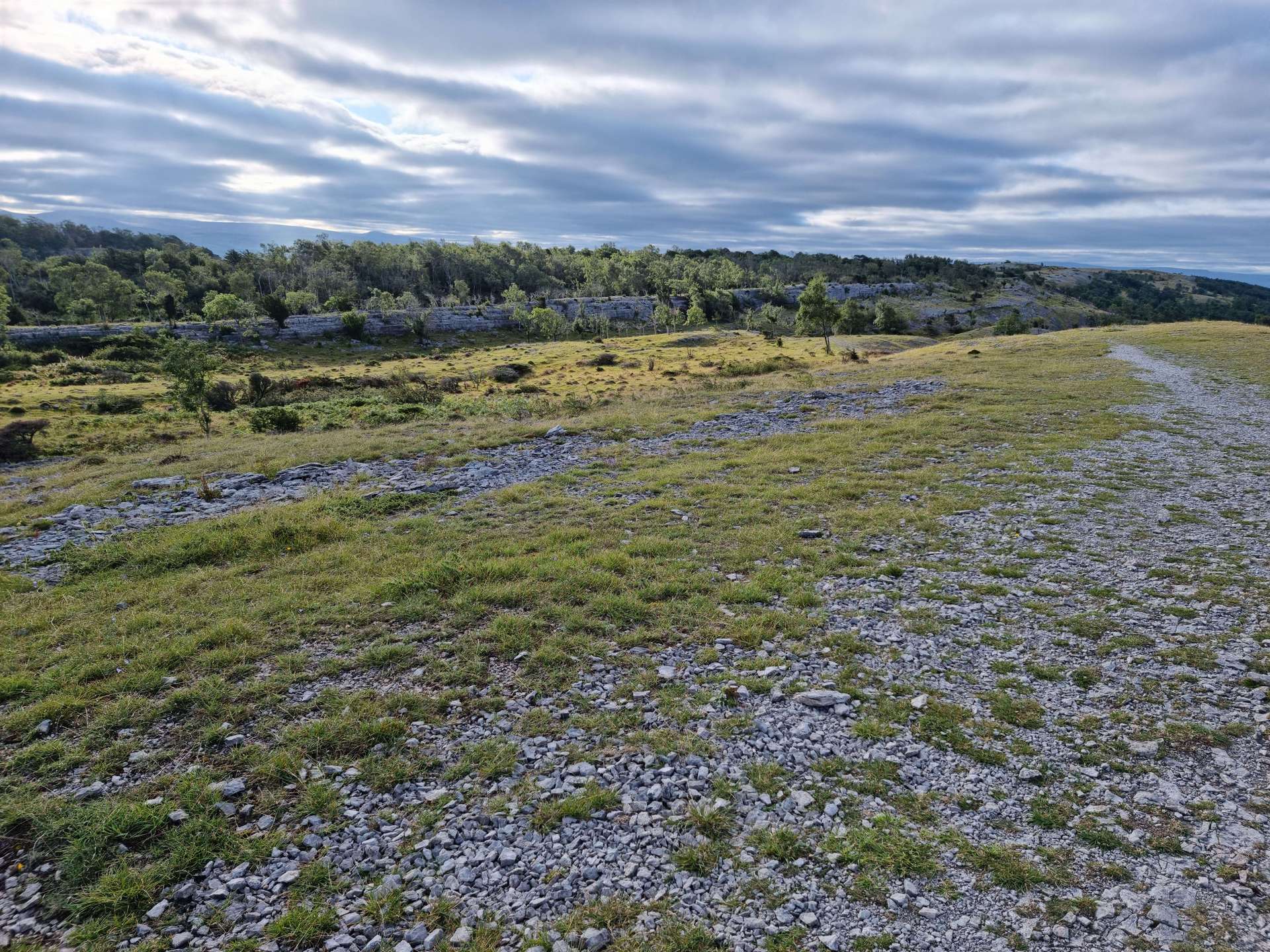
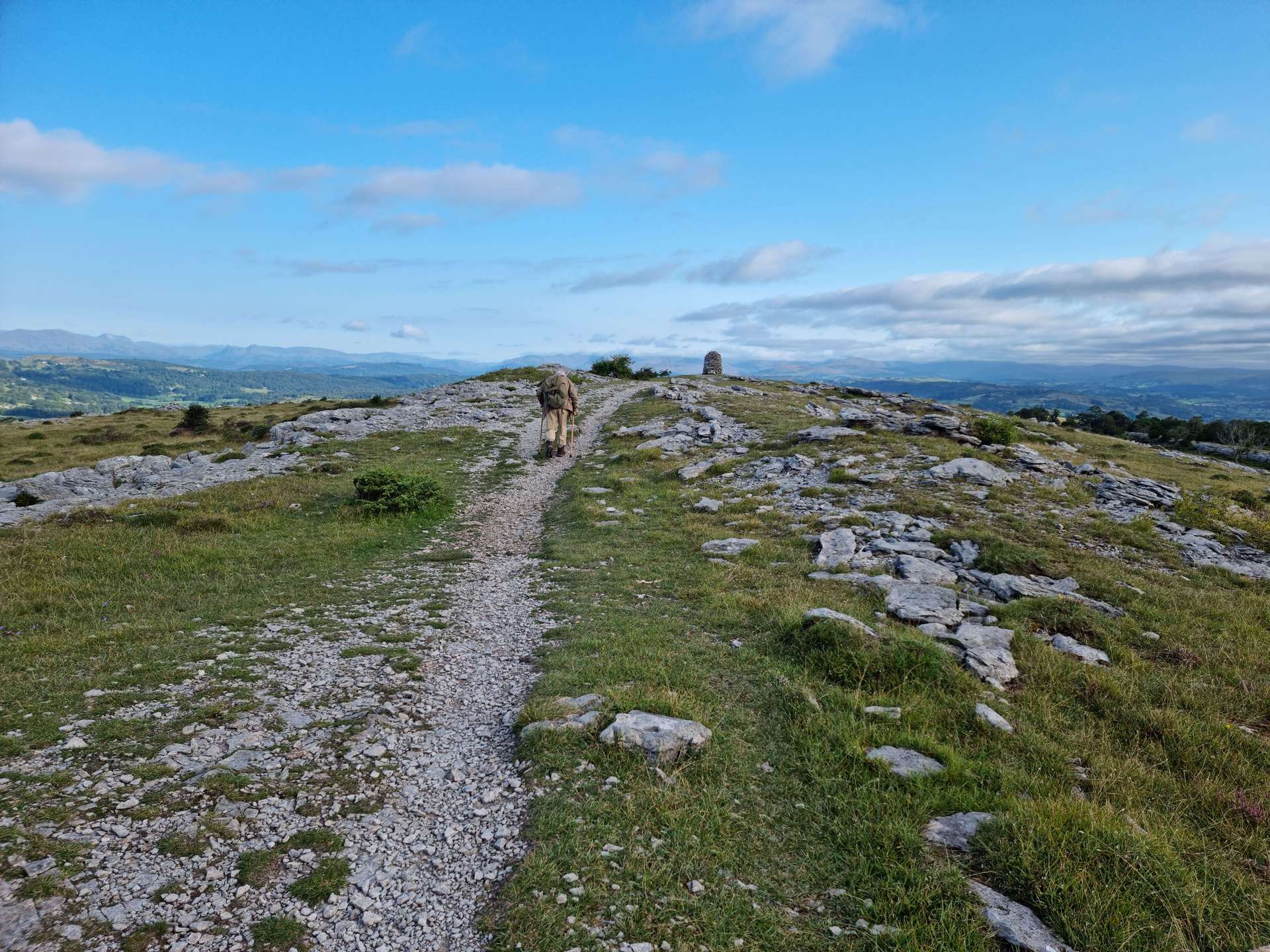
Finally, we arrived at the summit cairn, dedicated to Canon G.A.K. Hervey, who established the Lake District Naturalists’ Trust. Pausing to take in the breathtaking panoramic views, Chris and I descended, following a southwesterly path that wound through the woods.
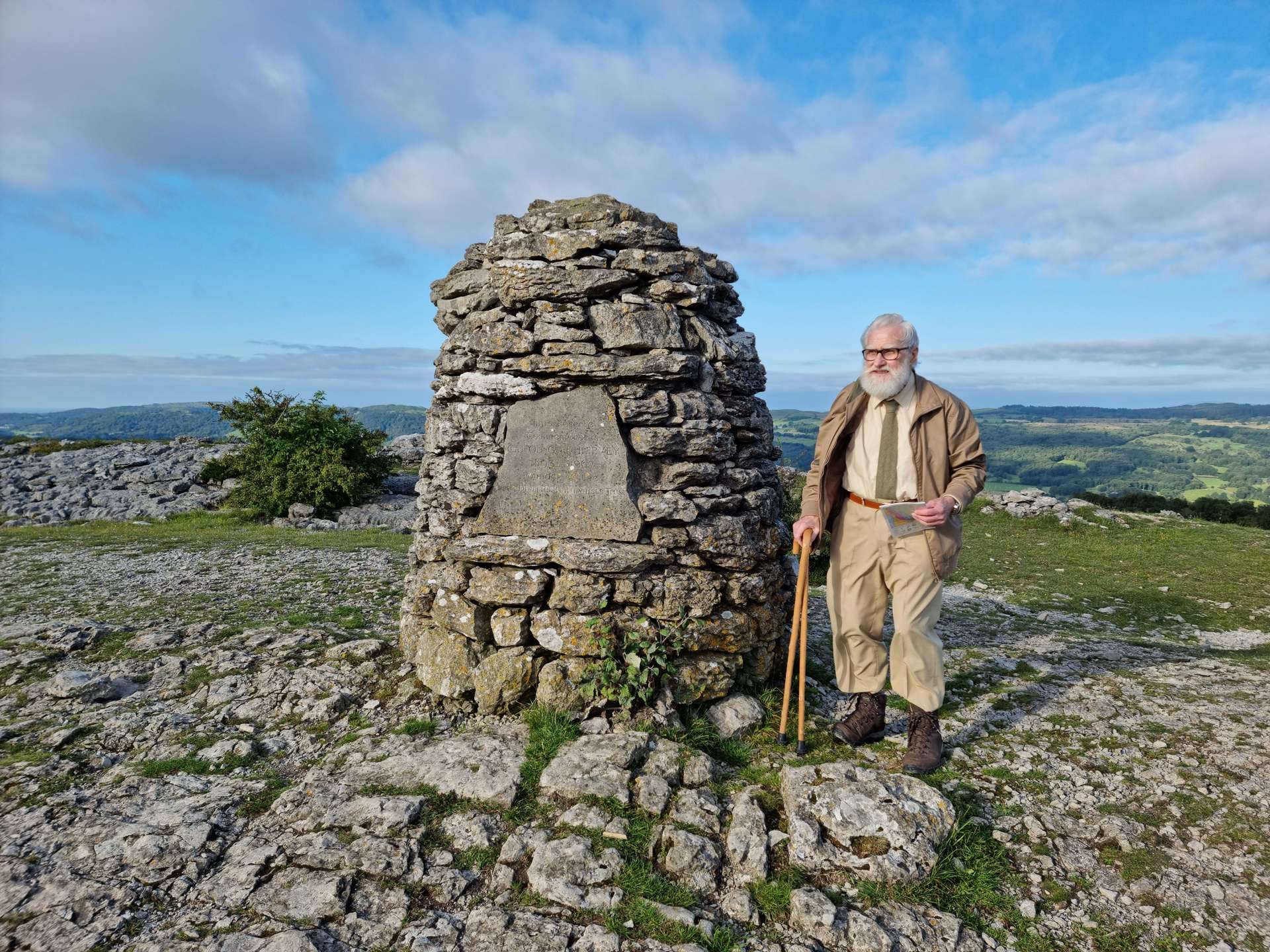
As we returned to the car and traversed the valley, Chris eagerly directed my attention to what he considered the highlight of our walk. Near Beck Head, he showed me a small river that gracefully emerged from the limestone escarpment. The sight was mesmerizing, with water visibly flowing from beneath the crag. It was a spectacular and beautiful scene, serving as a grand finale to our delightful morning excursion.

I’m grateful to Chris for leading this walk and enriching my understanding of the area. We’ve planned more hikes, each steeped in history, including several spots Chris hasn’t seen since he updated the guides. Perhaps on these journeys, he, too, will encounter something new.
Back to top of page

